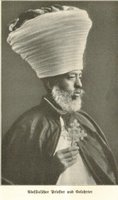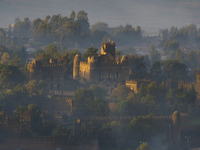
Njarka of Mali

Arab Bedouin Rebab
 Ethiopian Massinqo
Ethiopian Massinqo

Ugandan Idingiti
The Idingiti, a fiddle from Uganda, is similar in many ways to the Ethiopian fiddle called the Massinqo. In the world of Ethiopian musical instrument, the Massinqo (Messenqo) is an outstanding example of Ethiopian ingenuity. This one stringed fiddle may be the originator of the violin and the Arab one-stringed Rebab, the Chinese two-stringed fiddle called Erhu and the Ugandan one-stringed fiddle called Idingiti. From start to finish, the Masinko is built without the use of nails and glue. Indeed it is completely organic in construction by using just wood, goat skin, horse tail hair and cow gut string.
The existence of the Ugandan Masinko, called Idingiti, should not come as a surprise because Uganda is a stone’s throw away from Ethiopia. The development of the Idingiti could also have been due in part of the sphere of influence of Greater Ethiopia in the past. However, the Idingiti has been shrouded in mystery. This is not surprising! Uganda, as a former colony of Britain, was imposed with the idea that everything African, people or culture, was inferior and should be shelved away in a dingy room or alternatively at the British museum in London. In contrast, the Ethiopian Masinko thrived throughout the ages as there were no foreign colonial Masters to pass various suppressive decrees on the Ethiopians. Thus the Ugandan Idingiti is not very familiar to the many Masinko players and Azmaris of Ethiopia and musicians of the world.
The following description of the Idingiti is taken from a UNESCO vinyl record publication on the preservation of authentic African musical instrument such as the Idingiti and the Inanga; The idingiti of Uganda is a type of fiddle with a resonator made from a cross-section of a bull’s horn surmounted by a skin stretched over the sound box and nailed with wooden pegs; the neck supports a single string, a fiber of an agave plant attached to a glued knob at the lower end and to a peg inserted in the headpiece on top of the neck. Played with a fiber bow, it rests on the chest and is held by the right hand while the left produces a variety of sounds by touching the string. The Idingiti is used effectively as both a solo and accompanying instrument; in group playing, it carries the melody as does the flute. This description also applies to the Masinko of Ethiopia as described in Michael Powne’s book Ethiopian Music as well as the single-stringed Njarka of Mali which has a body made out of a gourd.
Michael Powne, in his book Ethiopian Music, indicates that the Rebab, an Arabian Masinko, was probably the musical devise that originated the Ethiopian Masinko. In the opinion of Ethiopedia, the use of the word “probably” suggests that Powne was not sure as to the origin of the Masinko. He might as well suggested that the Masinko was the inspiration for the invention of the Arabian Rebab. Indeed had the Masinko originated in Arabia, the Ethiopians would have called their beloved Masinko by the Arab name Rebab as did the Europeans who named their one two and three stringed Masinko as Rebec from the Arabic Rebab. Ofcourse the Rebec then gave rise to the European stradivarius violin.
Travelers are sometimes great observers of events and cultures they travel through in years past. One such person is Father Alvares, a Portuguese who traveled in Ethiopia in the sixteenth century. He describes the Masinko, albeit with few errors. Without any doubt, the Masinko did exist in Ethiopia even prior to that period by many thousands of years. The Ugandan Idingiti is probably as old too and is the blood brother of the Masinko.















 Sehin Belew the New Miss Ethiopia 1988 of the Washington DC Pageant at Hilton Hotel
Sehin Belew the New Miss Ethiopia 1988 of the Washington DC Pageant at Hilton Hotel 









































